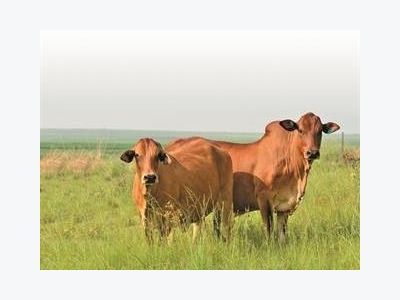Cattle
Managing feed and breeding in replacement females
Heifers, first-calvers, maiden ewes and first-lambers need to be managed properly to reduce risk in terms of productivity versus production costs
- Beef cows: meeting their nutritional needs
- Breeding Brahman cattle with superior genetics
- The value of instant green feed as livestock fodder
- Bovine respiratory disease complex
- Twinning in cattle: benefits vs cost
- Winter feeding methods: a tale of two farms
- 5 Cattle diseases that can kill your business
- Beef cattle conformation basics
Cattle

Tips for stress-free livestock transporting
Livestock transportation should result in as little stress to the animals as possible, whether they are being transported to the abattoir or other farms

Twinning in cattle: super-fertile cows
In this third part of our series on twinning in cattle, Chris Nel highlights some remarkable stud beef cows that have produced multiple twins

Boran: A no-fuss, no-hassle breed
Almost 20 years ago, Chris Webb introduced Borans to his crossbreeding programme on the 1 500ha farm, Tharfield, in the Eastern Cape

Arthropod-borne summer livestock diseases
As the weather grows hotter and wetter across the country, the incidence of livestock diseases transmitted by arthropods increases.

3 diseases spread by wildlife
Contact with wildlife can endanger your livestock, because wild animals are a source of diseases that seriously affect the productivity of livestock

The basics of hands-on dairy training
Transformation in SA’s dairy sector involves dairy training and the transfer of knowledge, as managing a dairy herd, big or small, requires expertise.

The smallest part of the ruminant diet
Ruminants need mineral trace elements to maintain health and to achieve desired levels of production and reproduction

The best dairy breed: A comparative study
The best dairy breed: A comparative study. Which is the best dairy breed? This question has caused much debate and long occupied dairy farmers the world over.

Tattooing and ear notching techniques
Tattooing and ear notching are widely used techniques to mark livestock. Each has its own advantages, disadvantages, application techniques and specific uses

Dealing with clostridial diseases (2)
Animals that die after being sick for a short time or are found dead without an obvious cause are likely to be suffering from a clostridial disease spread

Making grass silage while the sun shines
Grass silage provides better quality silage than hay and is less weather-dependent, as rain can set the hay-making process back

Making the most of grass silage
Good pasture managers apply appropriate fertiliser treatment, based on regular soil and grass sampling, analyses and recommendations.
